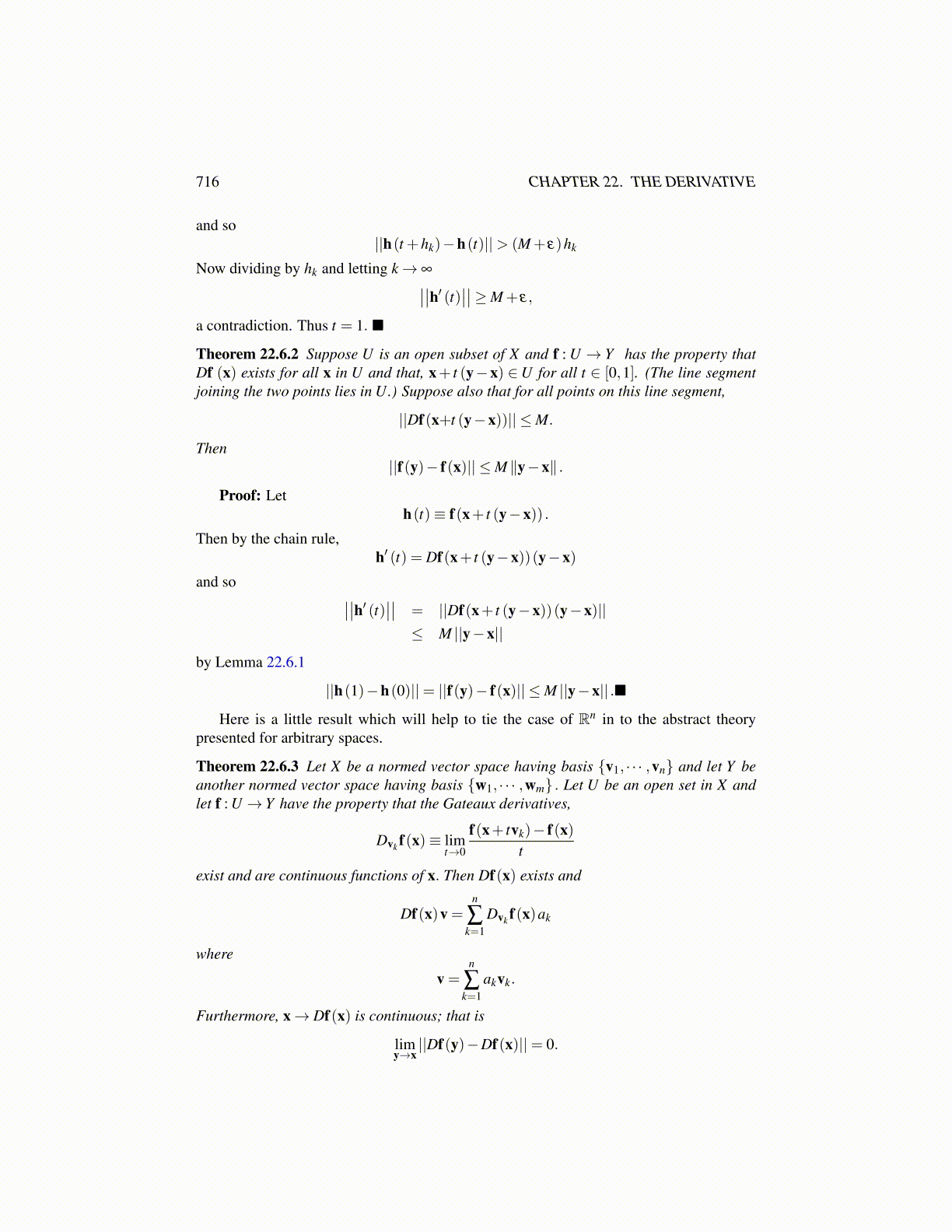
716 CHAPTER 22. THE DERIVATIVE
and so||h(t +hk)−h(t)||> (M+ ε)hk
Now dividing by hk and letting k→ ∞∣∣∣∣h′ (t)∣∣∣∣≥M+ ε,
a contradiction. Thus t = 1.
Theorem 22.6.2 Suppose U is an open subset of X and f : U → Y has the property thatDf (x) exists for all x in U and that, x+ t (y−x) ∈U for all t ∈ [0,1]. (The line segmentjoining the two points lies in U.) Suppose also that for all points on this line segment,
||Df(x+t (y−x))|| ≤M.
Then||f(y)− f(x)|| ≤M ∥y−x∥ .
Proof: Leth(t)≡ f(x+ t (y−x)) .
Then by the chain rule,h′ (t) = Df(x+ t (y−x))(y−x)
and so ∣∣∣∣h′ (t)∣∣∣∣ = ||Df(x+ t (y−x))(y−x)||≤ M ||y−x||
by Lemma 22.6.1
||h(1)−h(0)||= ||f(y)− f(x)|| ≤M ||y−x|| .
Here is a little result which will help to tie the case of Rn in to the abstract theorypresented for arbitrary spaces.
Theorem 22.6.3 Let X be a normed vector space having basis {v1, · · · ,vn} and let Y beanother normed vector space having basis {w1, · · · ,wm} . Let U be an open set in X andlet f : U → Y have the property that the Gateaux derivatives,
Dvk f(x)≡ limt→0
f(x+ tvk)− f(x)t
exist and are continuous functions of x. Then Df(x) exists and
Df(x)v =n
∑k=1
Dvk f(x)ak
where
v =n
∑k=1
akvk.
Furthermore, x→ Df(x) is continuous; that is
limy→x||Df(y)−Df(x)||= 0.